Anko (pâte de haricot azuki)
Ingredients
- 100 g haricot azuki
- 100 g sucre
- 1 bonne grosse pincée de sel
Instructions
- Mettez la quantité nécessaire de haricot dans un récipient et remplissez d’eau froide. Laissez tremper une nuit entière (minimum 12h).
- Le lendemain les haricots ont gonflé. Égouttez-les.
- Faites bouillir une grande casserole d’eau, puis ajoutez les haricots. Laissez bien chauffer le temps que l’eau se remette à bouillir, puis baissez pour porter le tout à frémissement. L’eau ne doit pas être sur forte ébullition pendant la cuisson, au risque que la chair sorte du haricot !
- Laissez frémir pendant environ 1h20-1h30.
- Égouttez bien, ne rincez surtout pas ! Remettez les haricots très chauds dans une casserole et versez tout de suite le sucre et le sel.
- Mélangez bien. Le sucre fait ressortir du liquide du haricot et c’est tout à fait normal !
- Deux solutions pour la suite : mixer longuement le tout ou faire cuire les haricots entiers. Pour une version plus lisse, la version koshian, il faudra mixer longuement et au besoin en ajoutant un peu d’eau.
- Puis passer le tout dans un tamis assez fin en raclant bien au dessous d’une casserole. La pâte sera alors plus lisse.
- Mettez à chauffer sur feu modéré et laissez cuire 15 minutes environ pour que la pâte sèche davantage. Le fond de la casserole ne doit plus se napper de pâte et doit se sécher comme pour une pâte à choux.
- Pour la pâte avec des morceaux, la version tsubuan, pas besoin de mixer ni de tamiser. Vous pouvez laisser les haricots entiers. J’en écrase quand même quelques uns pour que le tout sèche plus facilement. Il faudra juste bien remettre à cuire de la même façon et pour les mêmes raisons. La pâte doit se détacher du fond de la casserole.
- J’ai fait ici deux versions. Laissez ensuite la pâte refroidir à l’air libre, sans la couvrir de film étirable.
- Quand elle a totalement refroidi, vous pourrez alors la conserver dans un récipient avec un film étirable au contact. Elle est facilement manipulable et vous pouvez maintenant préparer une recette qui nécessite de l’anko.
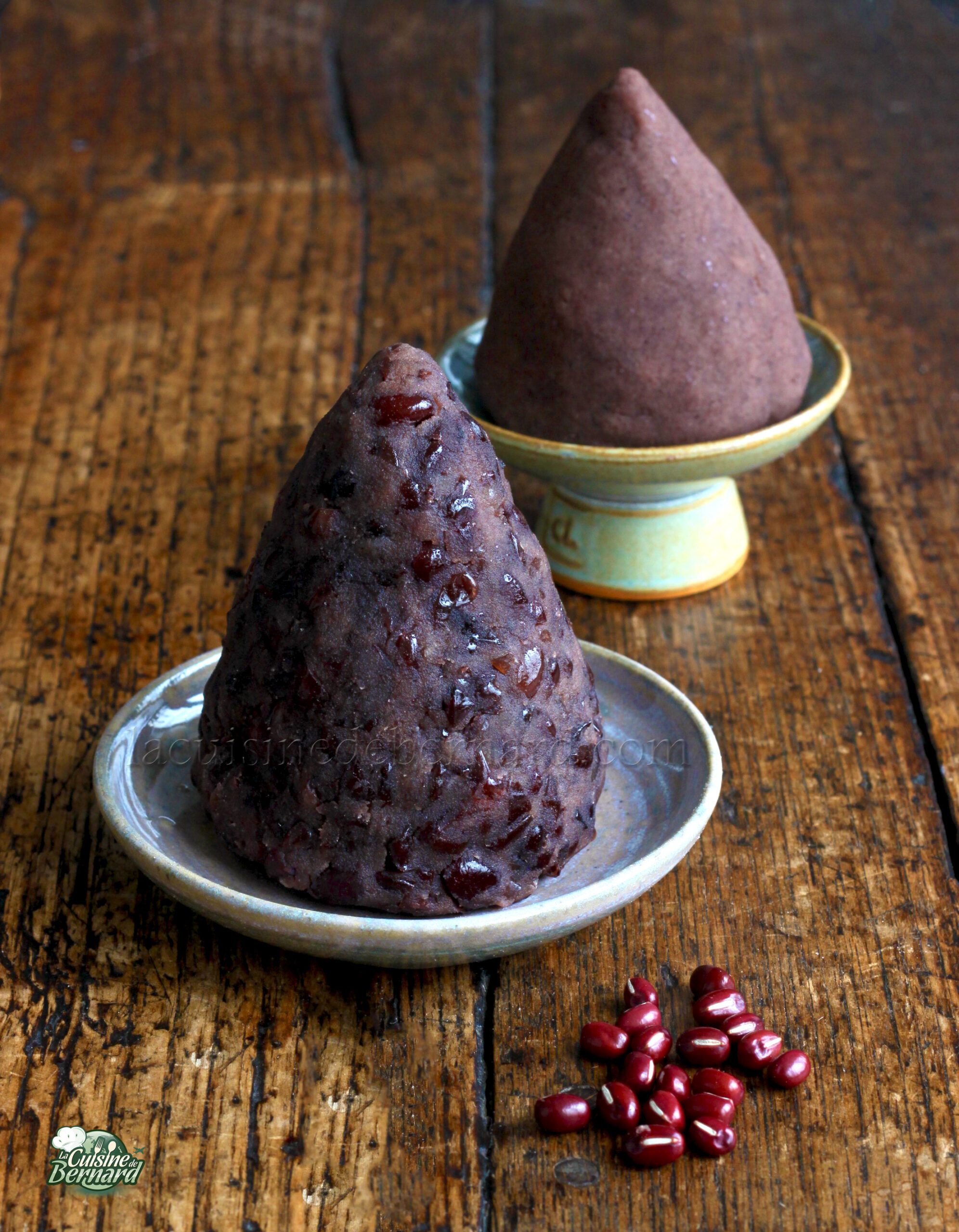
A recipe that does not fail to divide! Either we like it or we really can’t. It took me a while to really appreciate, then love this sweet red azuki bean paste. I used to buy pastries in Tokyo the many times I went there in another life, which contained them and at first I was a little skeptical. Then it became my little routine to finally taste it every time. I wanted to give you the recipe of theanko, with the two possible versions: the tsubuan, with the whole cooked beans and the koshian, with the mixed and sifted beans. This will of course be followed by a dorayaki recipe!
For about 300g of anko
- 100g of dry azuki beans
- 100g of sugar
- a good pinch of salt
This is the azuki bean. It can be found in Asian stores or Japanese grocery stores.
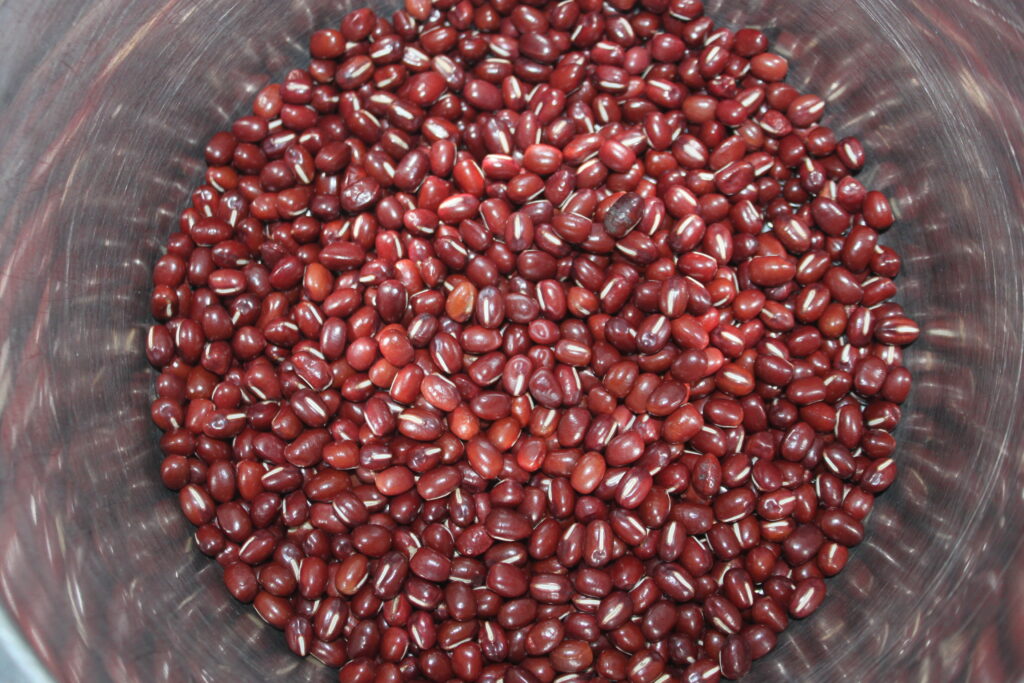
Put the necessary amount in a container and fill with cold water. Let soak overnight (minimum 12 hours).
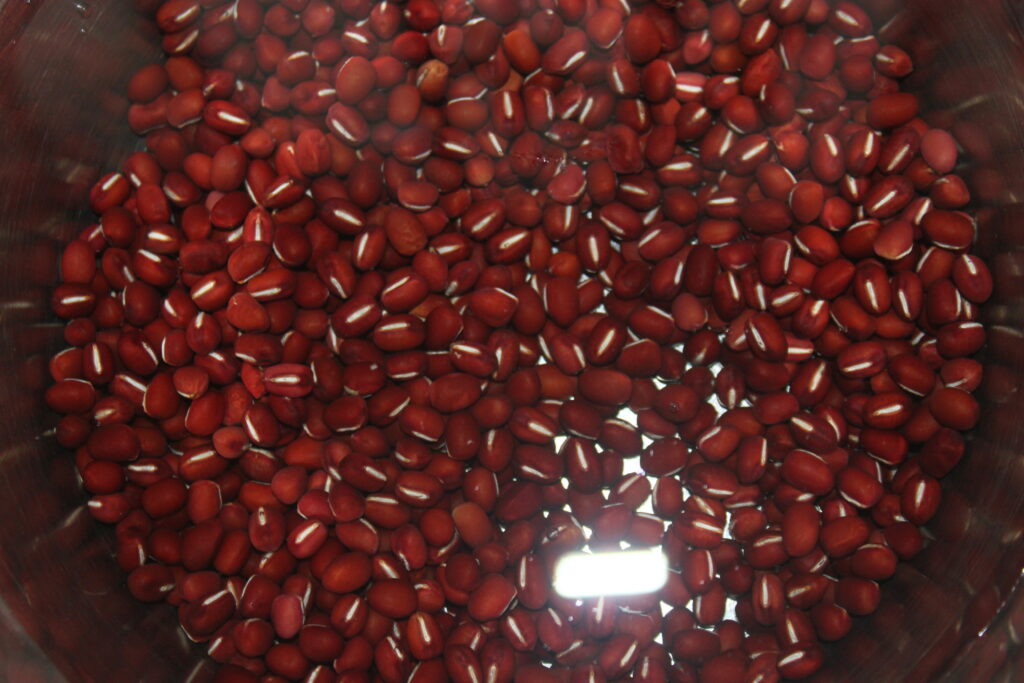
The next day the beans swelled.
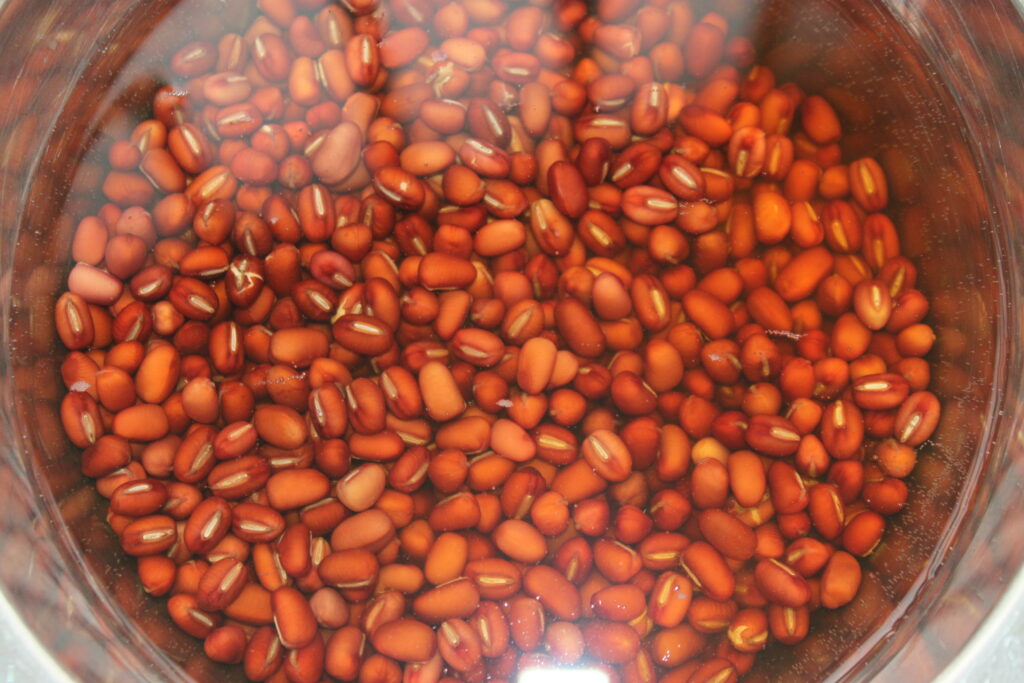
Drain them.
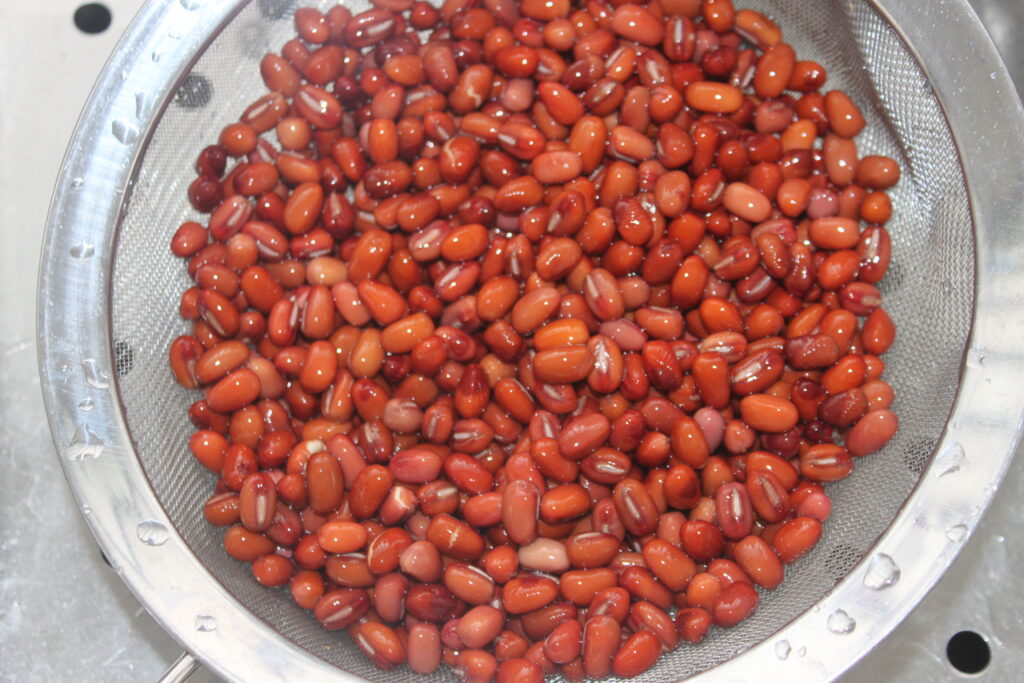
Bring a large pot of water to a boil, then add the beans. Allow to heat through until water comes back to a boil, then turn down to a simmer. The water should not be boiling heavily during cooking, otherwise the flesh will come out of the bean!
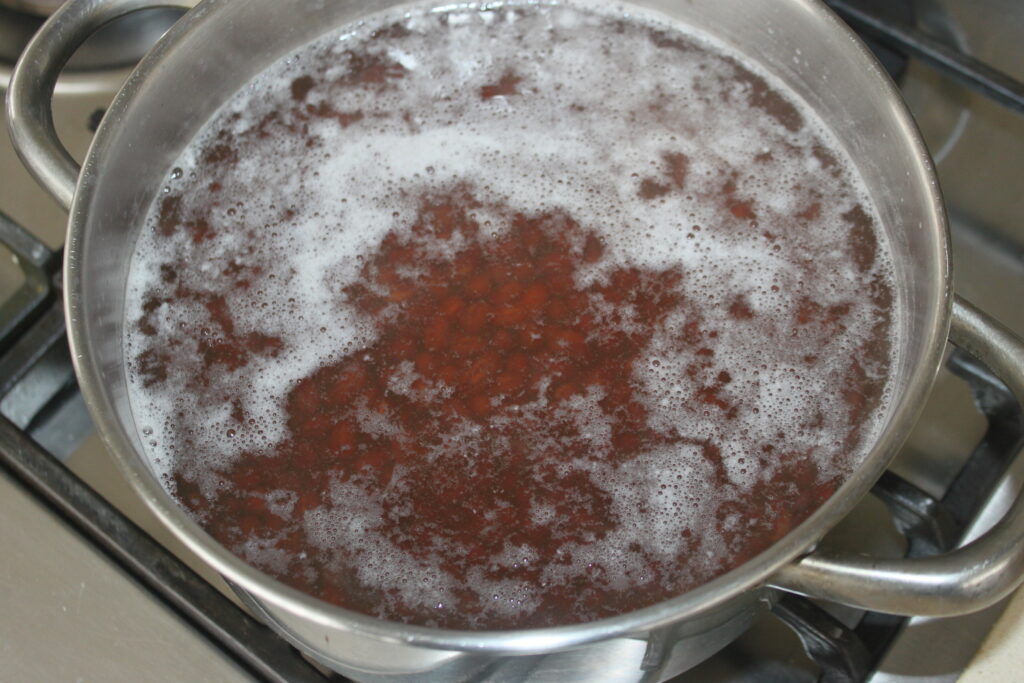
Let simmer for about 1h20-1h30.
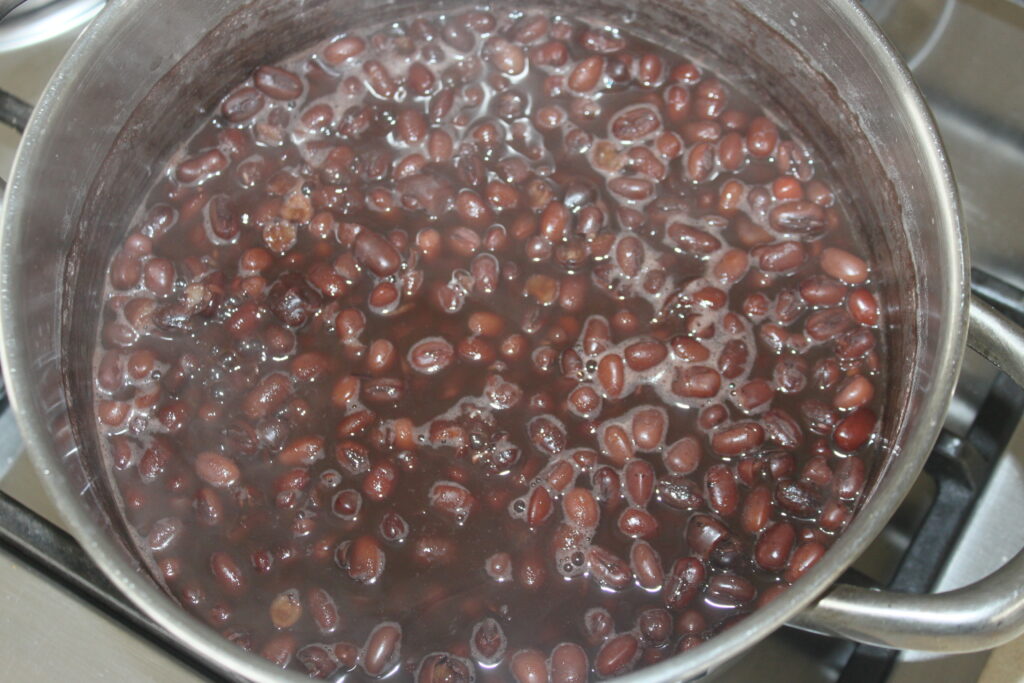
Drain well, do not rinse! Put the beans back into a very hot pan and immediately add the sugar and salt.
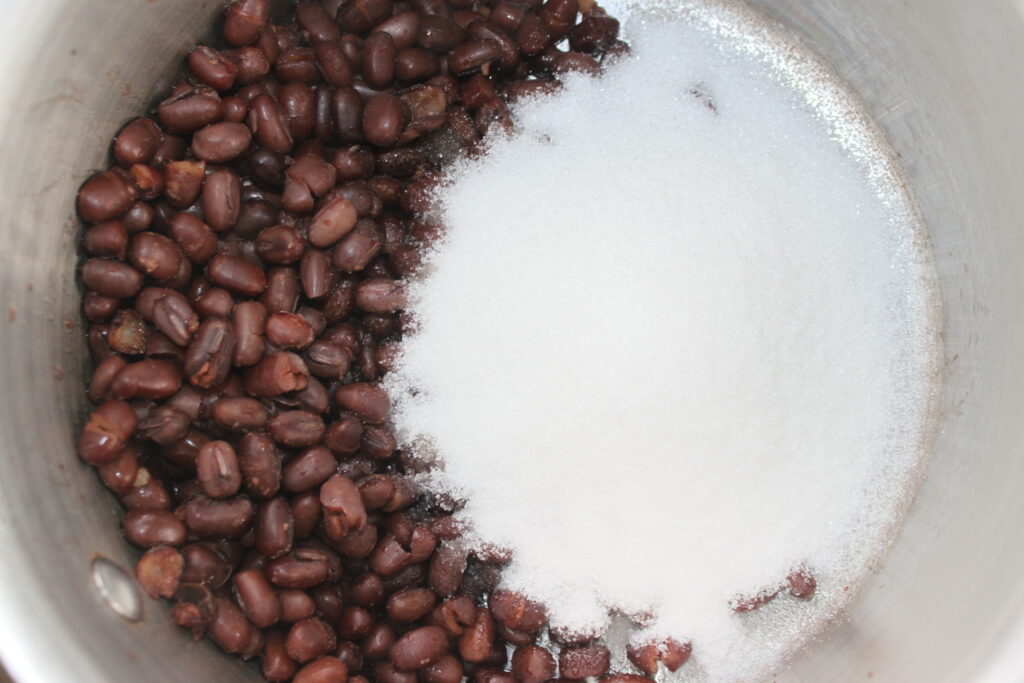
Mix well. The sugar brings out some of the liquid in the bean and that’s perfectly normal!
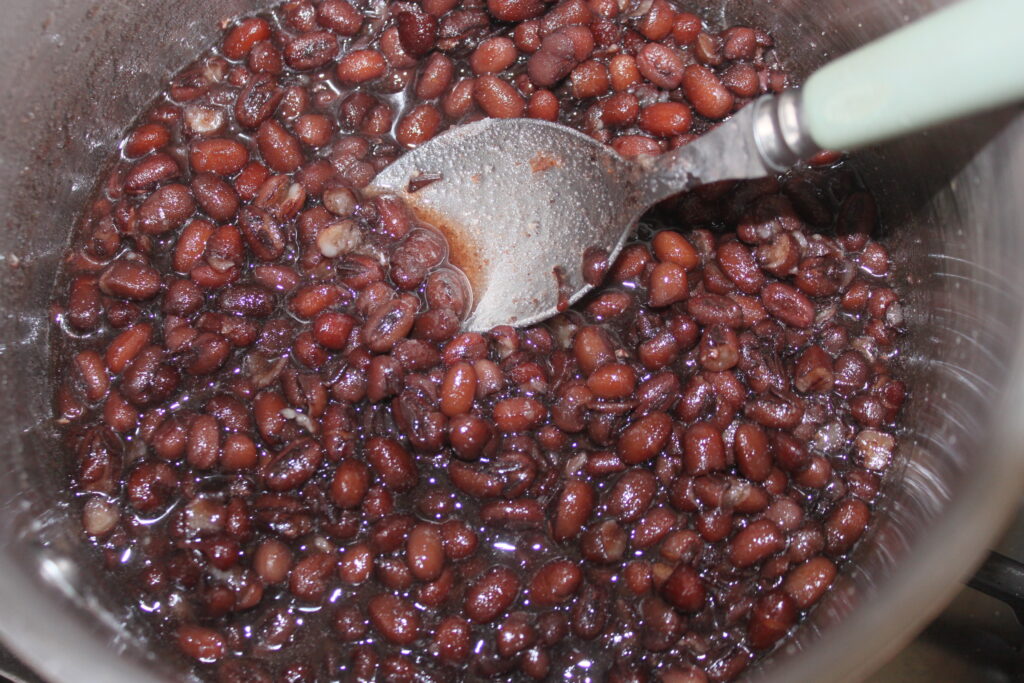
Two solutions for the continuation: to mix the whole or to cook the whole beans. For a smoother version, the koshian version, it will be necessary to mix for a long time and if necessary by adding a little water.
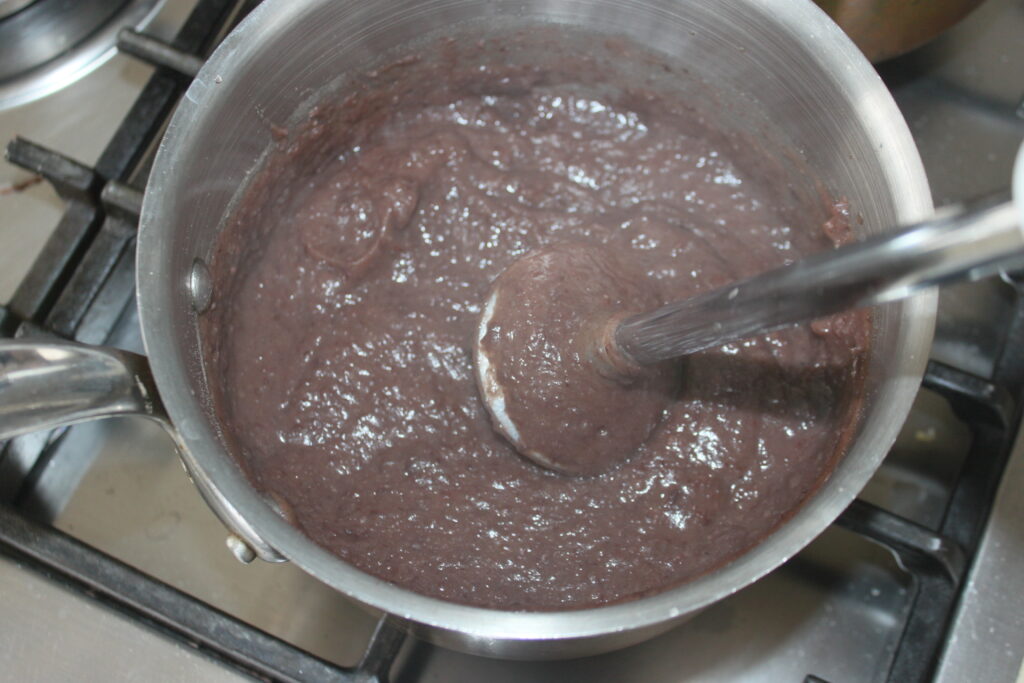
Then pass it through a fairly fine sieve, scraping well under a pan.
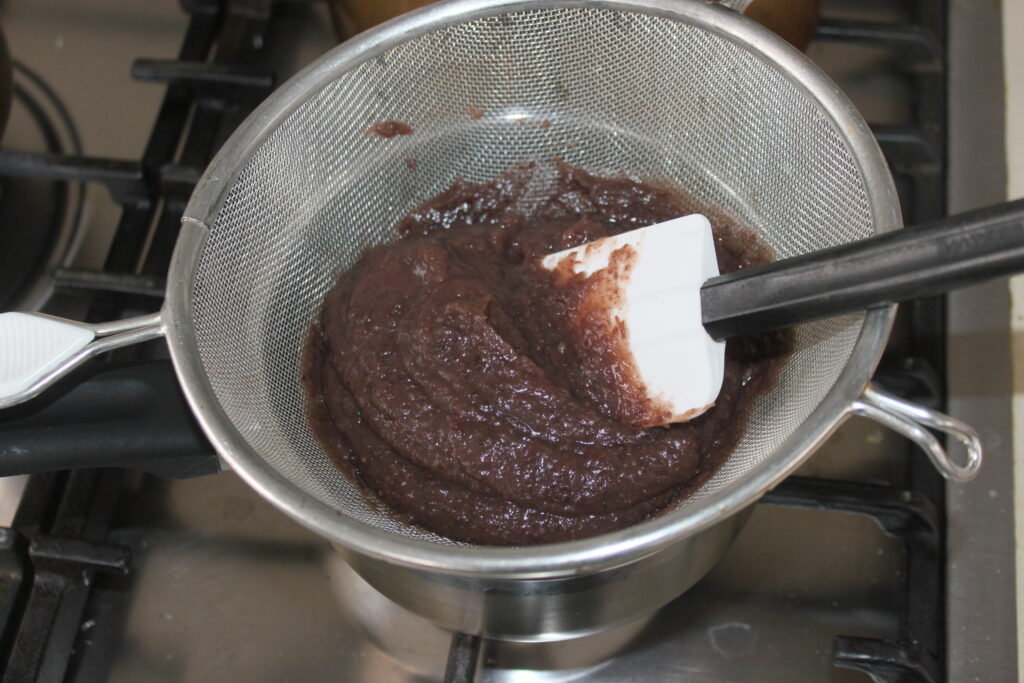
This will make the dough smoother.
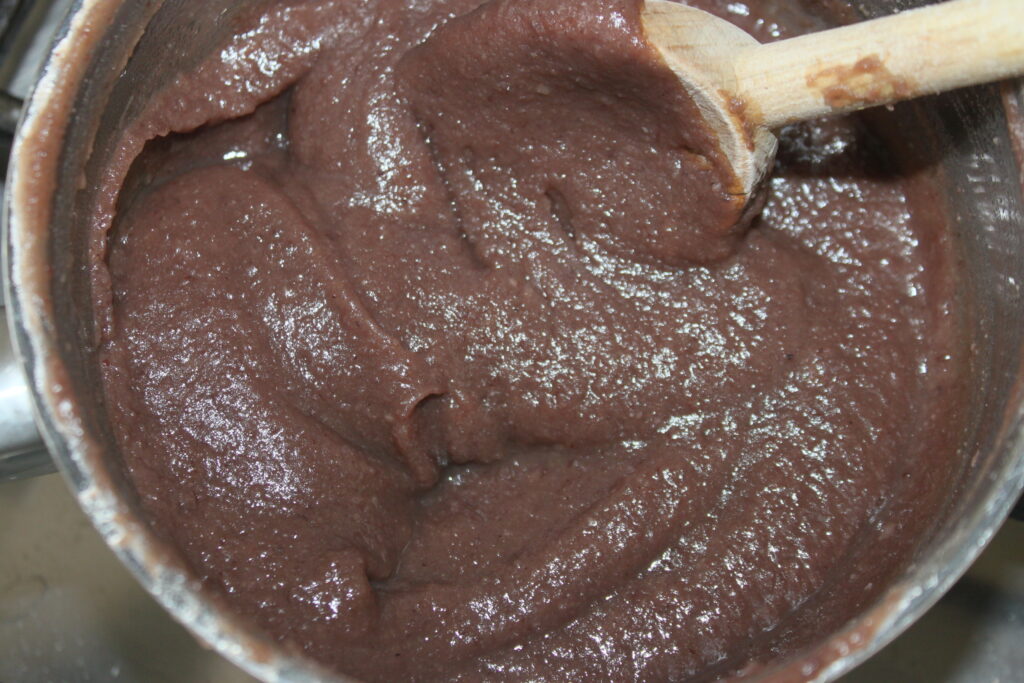
Heat over moderate heat and cook for about 15 minutes to allow the dough to dry further. The bottom of the pan should no longer be covered with dough and should dry out like a choux pastry.
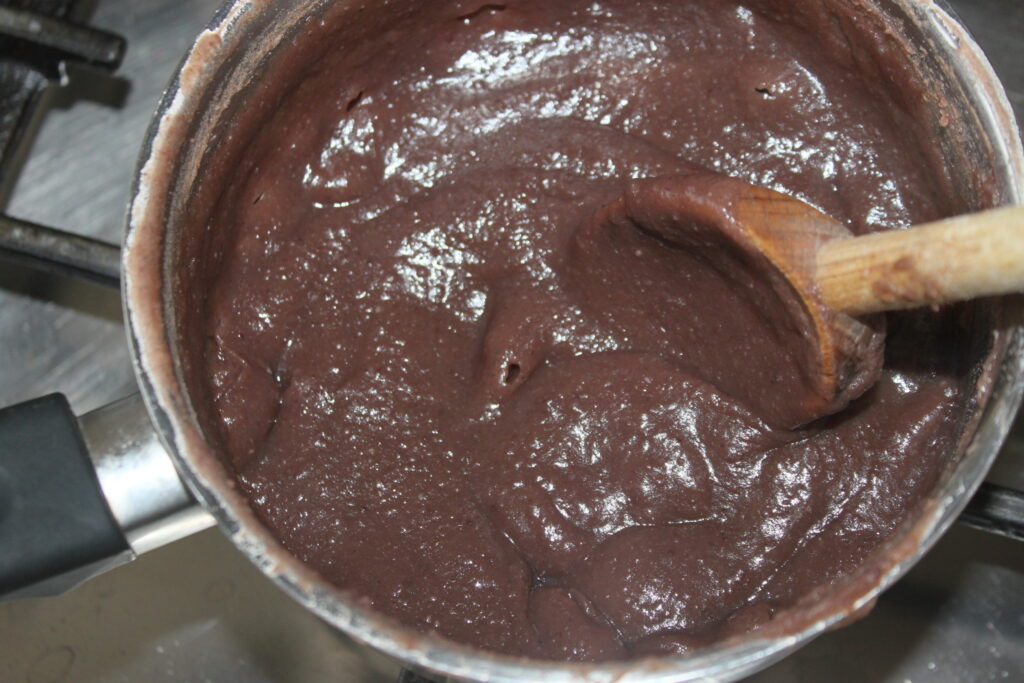
It is this operation that will allow the dough to be manipulated and shaped.
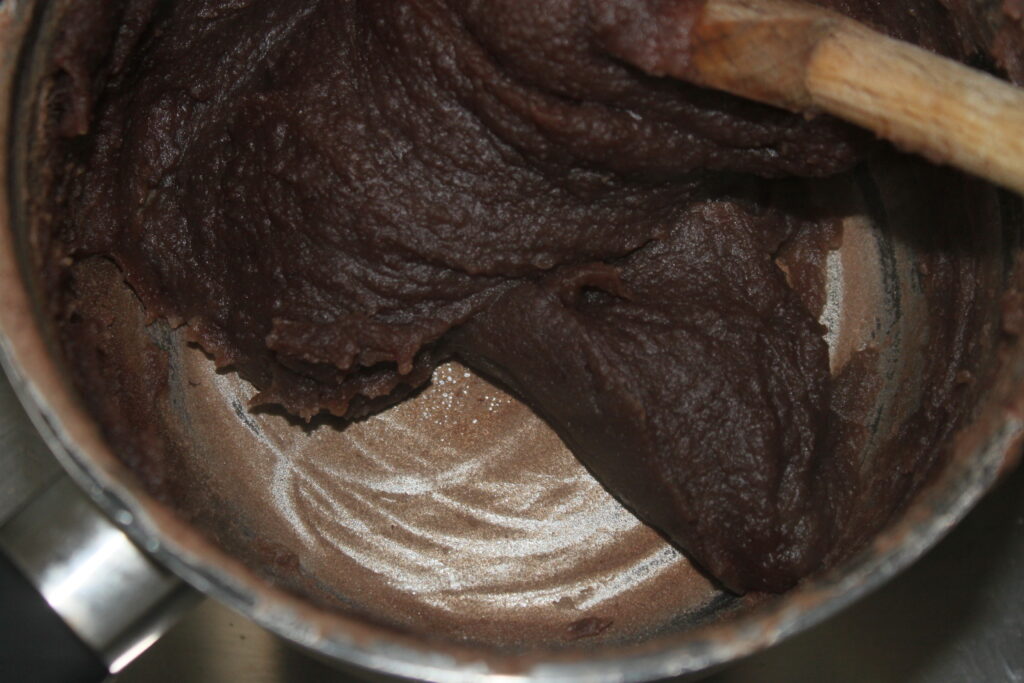
For the chunky dough, the tsubuan version, no need to mix or sift. You can leave the beans whole. I still crush a few to make it dry more easily. It will just have to be cooked again in the same way and for the same reasons.
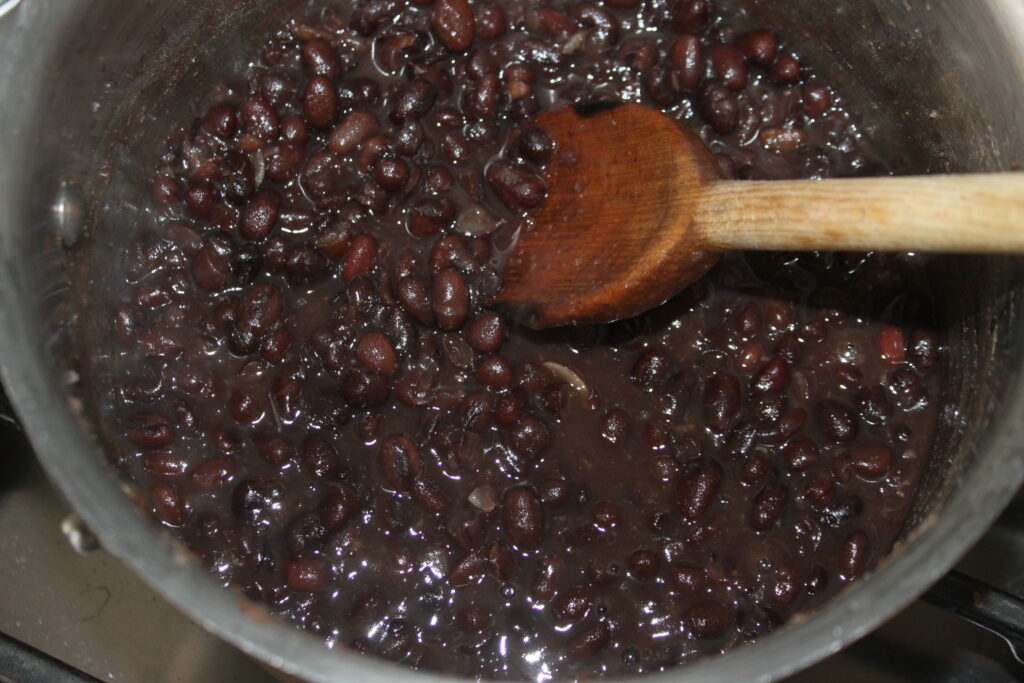
The dough should pull away from the bottom of the pan.
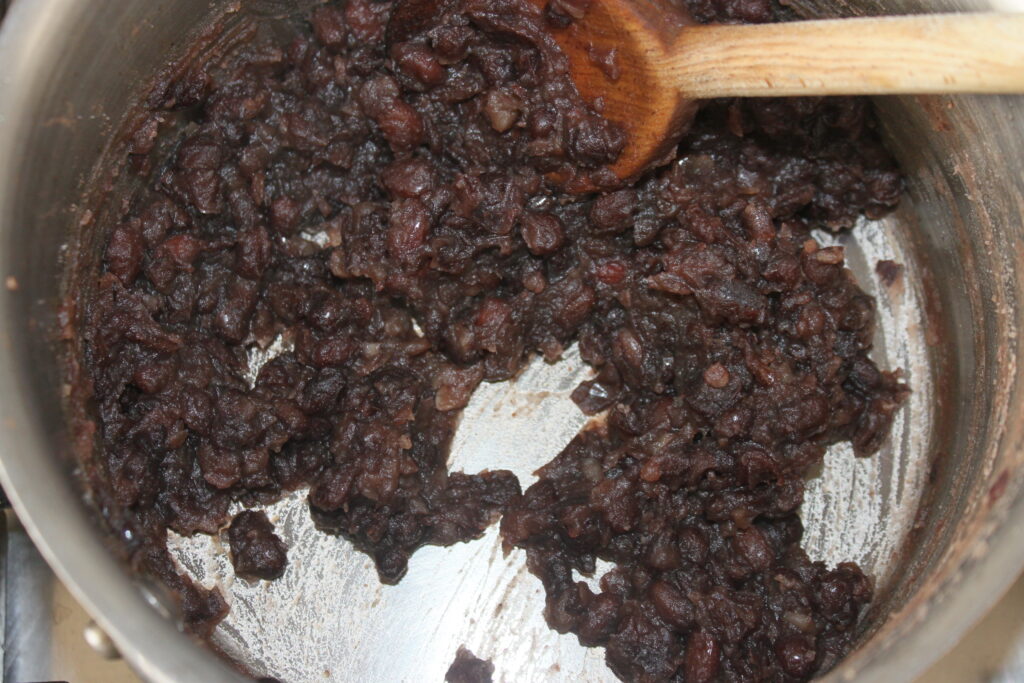
I have made two versions here. Then let the dough cool in the open air, without covering it with cling film.
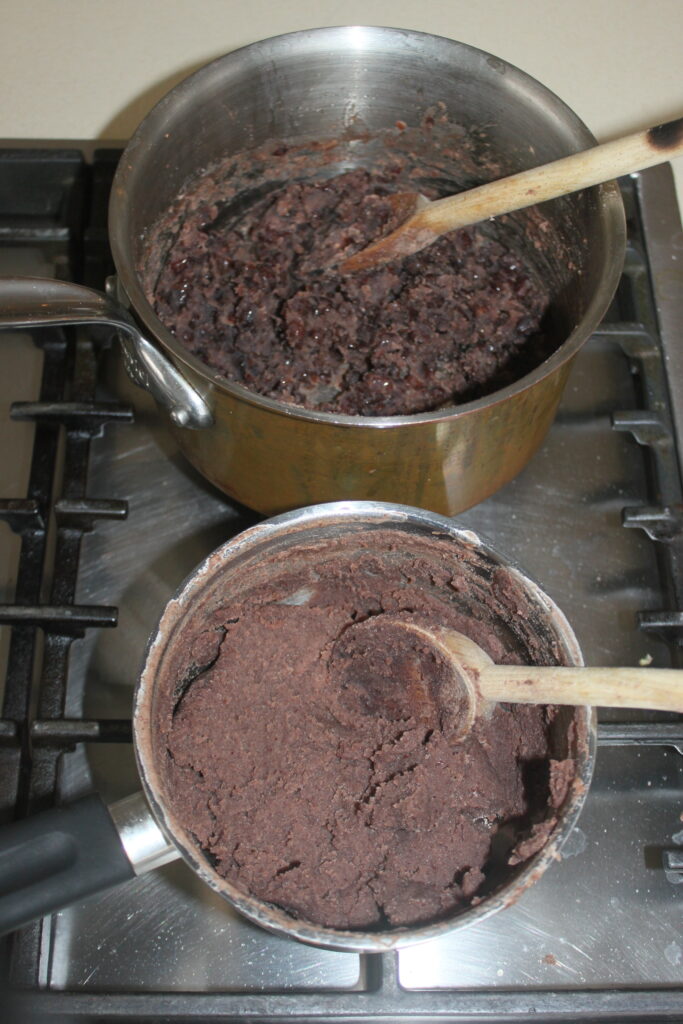
When it has cooled down completely, you can then store it in a container with cling film around it. It is easy to handle and you can now prepare a recipe that requires anko.
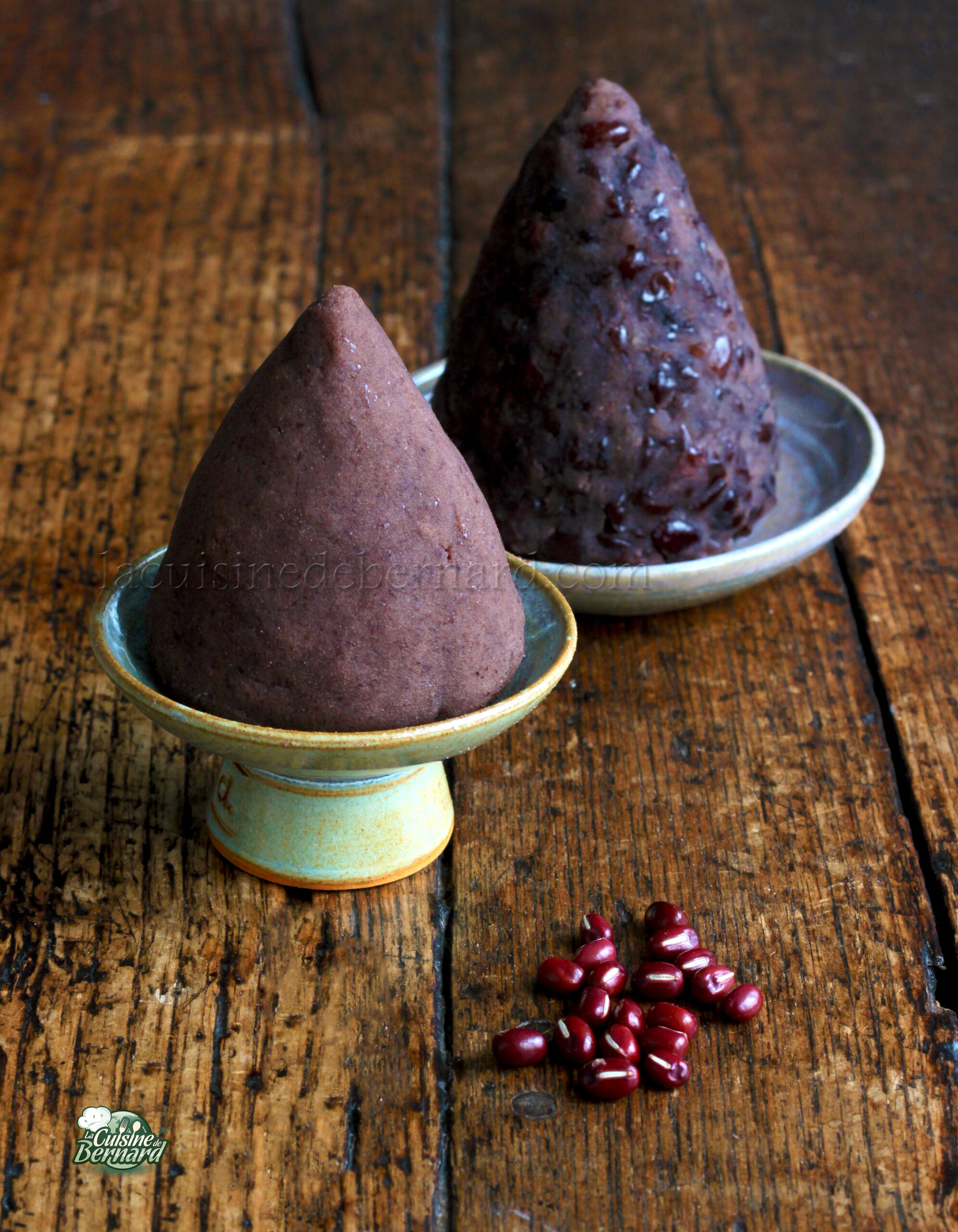
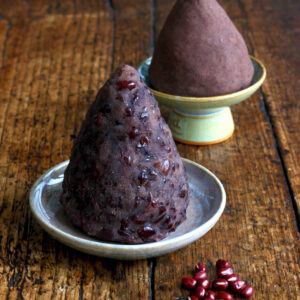
Anko (pâte de haricot azuki)
Ingredients
- 100 g haricot azuki
- 100 g sucre
- 1 bonne grosse pincée de sel
Instructions
- Mettez la quantité nécessaire de haricot dans un récipient et remplissez d’eau froide. Laissez tremper une nuit entière (minimum 12h).
- Le lendemain les haricots ont gonflé. Égouttez-les.
- Faites bouillir une grande casserole d’eau, puis ajoutez les haricots. Laissez bien chauffer le temps que l’eau se remette à bouillir, puis baissez pour porter le tout à frémissement. L’eau ne doit pas être sur forte ébullition pendant la cuisson, au risque que la chair sorte du haricot !
- Laissez frémir pendant environ 1h20-1h30.
- Égouttez bien, ne rincez surtout pas ! Remettez les haricots très chauds dans une casserole et versez tout de suite le sucre et le sel.
- Mélangez bien. Le sucre fait ressortir du liquide du haricot et c’est tout à fait normal !
- Deux solutions pour la suite : mixer longuement le tout ou faire cuire les haricots entiers. Pour une version plus lisse, la version koshian, il faudra mixer longuement et au besoin en ajoutant un peu d’eau.
- Puis passer le tout dans un tamis assez fin en raclant bien au dessous d’une casserole. La pâte sera alors plus lisse.
- Mettez à chauffer sur feu modéré et laissez cuire 15 minutes environ pour que la pâte sèche davantage. Le fond de la casserole ne doit plus se napper de pâte et doit se sécher comme pour une pâte à choux.
- Pour la pâte avec des morceaux, la version tsubuan, pas besoin de mixer ni de tamiser. Vous pouvez laisser les haricots entiers. J’en écrase quand même quelques uns pour que le tout sèche plus facilement. Il faudra juste bien remettre à cuire de la même façon et pour les mêmes raisons. La pâte doit se détacher du fond de la casserole.
- J’ai fait ici deux versions. Laissez ensuite la pâte refroidir à l’air libre, sans la couvrir de film étirable.
- Quand elle a totalement refroidi, vous pourrez alors la conserver dans un récipient avec un film étirable au contact. Elle est facilement manipulable et vous pouvez maintenant préparer une recette qui nécessite de l’anko.

